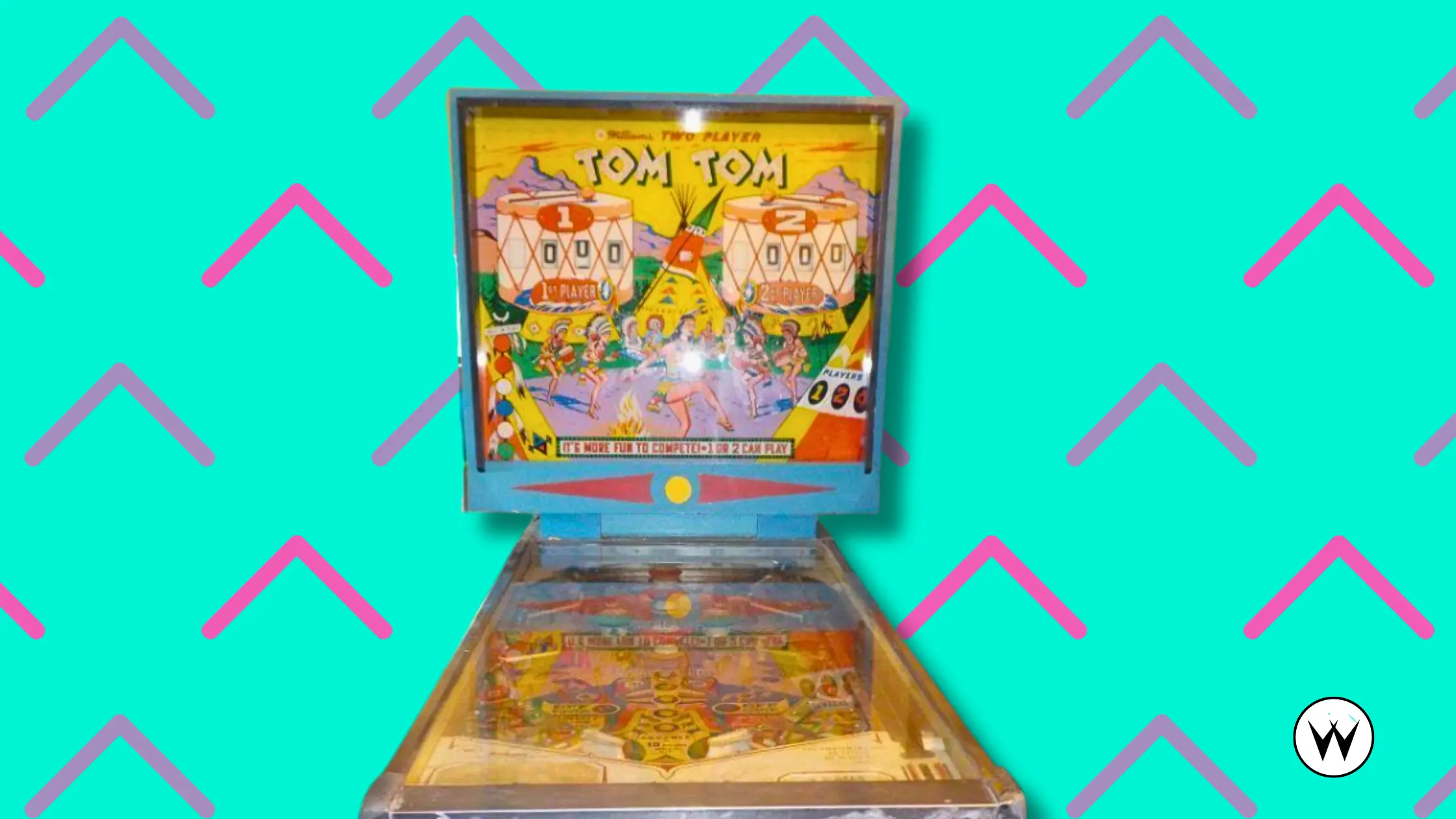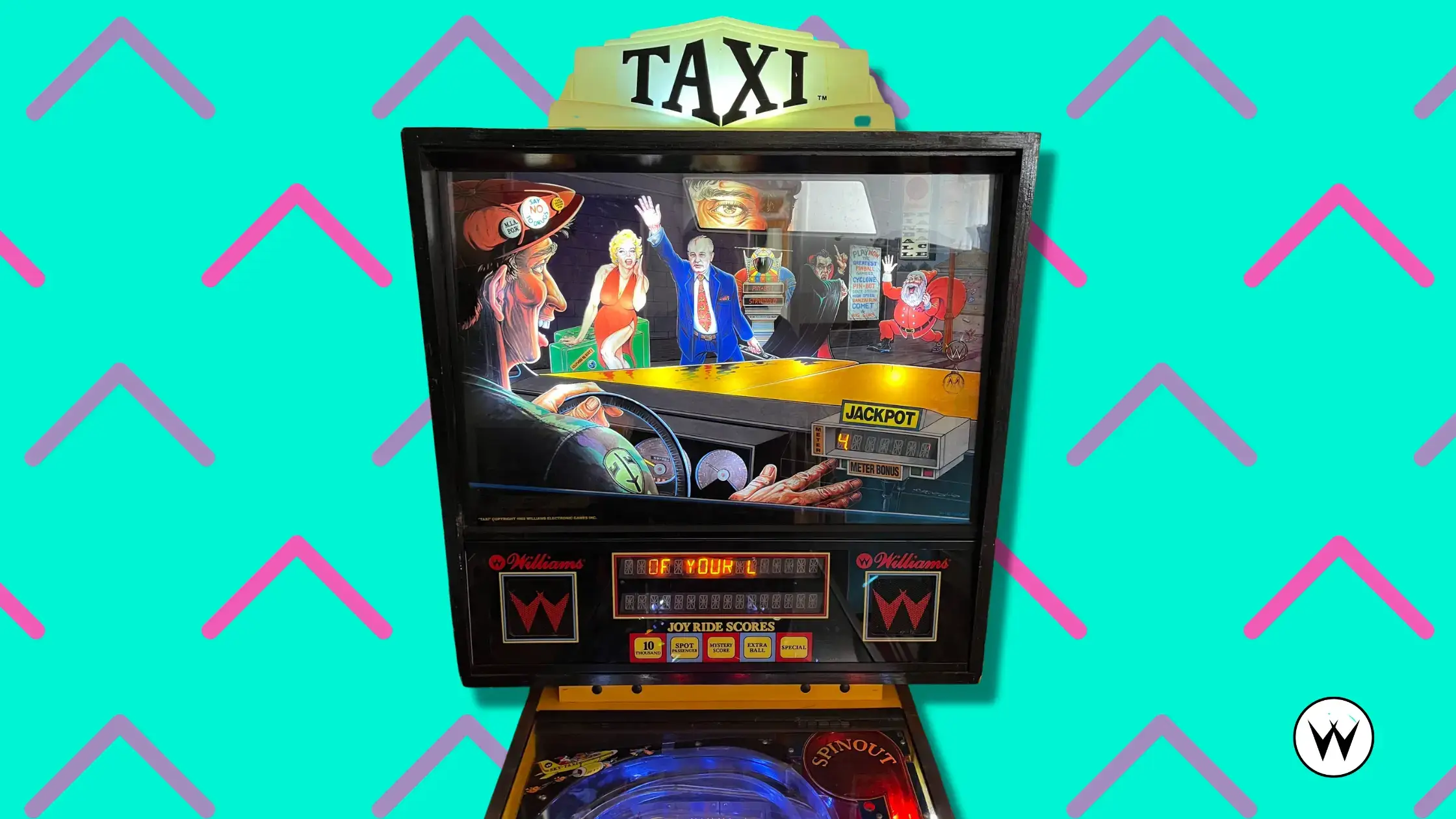Summer Time
Quickie Version:
Make the Skill Shot [center lane] … a LOT. if the bottom upkicker deposits the ball into the central “stop clock” saucer, shoot letters when the clock is stopped. Drain and re-Skill Shot when it would take too long to do something useful with the ball.
Go-to Flipper:
Balanced
Risk Index:
High, but this game runs on TIME so nudge to conserve time, not ball count
Full Rules:
Ah, Summer Time / Travel Time. The “forever or crap” game. It can be great, boring or almost unplayably bad. Read on and be amazed, disgusted or both. FWIW, my best score on this is a bit over 11 million - - yes, rolling it 110 times in one game. I played it literally all day - - not just the same quarter, the same game - - and only stopped when the arcade closed for the night. I had a bit of an audience for much of the time. Also, the game room manager called the route operator, thinking I was tampering with the game. The operator drove over, even though it was on a Sunday, and watched me for half an hour or so. He shook his head and left. After that, I didn’t play the game much any more except when I wanted some cheap practice. The Skill Shot is to make the center lane to add 10 time units. This is THE MOST IMPORTANT thing about the entire game. Learn this or lose miserably. The game runs on time, not balls. You start with 1:30 on the clock; the clock starts running as soon as the ball goes through one of the top three lanes. You can stop the clock by shooting the ball into the center saucer; this is your single most important shot on the game. The clock is restarted by either of the red rollover buttons to the sides of the center saucer area and by the upkicker between the flippers. The clock also stops when the ball drains out either side, but if the ball drains out the middle, e.g. between the flippers and the upkicker, the clock doesn’t stop until the ball is in the bottom trough, so try to not to drain down the middle. If you see that a center drain is unavoidable, in some cases you can slap the ball backwards with a flip-and-release to get it to drain quicker! Besides the top center lane, time is added to the clock when you complete the set of six top T-R-A-V-E-L standup targets or the four mid-playfield T-I-M-E targets and then get the ball to drop into the upkicker. Each is good for 25 time units. The clock maxes out at 2:55, so if you’re close to that and have the upkicker lit, shoot more letters before using it. Basic strategy: make the Skill Shot every time you plunge. During play, shoot for the letters to finish them, then let the ball roll down off a flipper into the upkicker to cash in and add time. In most cases, the upkicker will then throw the ball into the stop clock saucer, which then kicks the ball out towards the right flipper. You’ve just added 25 seconds and stopped the clock; shoot for more letters, i.e. rinse and repeat. When you go up top, try to go around the start clock buttons, of course. You can also get the ball up top with a too-hard shot to the center saucer that can go through into the bumpers. Key things on this game are the kickouts, especially how often the upkicker successfully plops the ball into the stop clock saucer. If that percentage isn’t high, games will be short since direct stop-clock shots are both difficult and often go through as mentioned. Also, the machine’s pitch is critical: if the game is too shallow or floaty, the ball will take too long to do things while the clock is running, and you won’t be able to earn time faster than it’s used up. In this case, a viable strategy is to just Skill Shot and drain all day, i.e. let the ball go out as quickly as you can and hope it averages less than 10 time units before doing so. Points, oh, yes, points. It’s all about the saucers and top lanes. The stop clock one is worth 5000 when lit, and the upkicker, when you have a set of letters completed, is also 5000, otherwise the upkicker is 500. Top lanes are 2000 for the center and 1000 for each side. The rollover buttons, targets, slings and bumpers don’t add much unless you have very active bumpers. Ball control is key - - managing the clock means not cradling the ball when the clock is running. Flailing just wastes time you haven’t got to spare. Do one of three things: take controlled, well-aimed shots; coax the ball dribble into the upkicker; or try to drain a.s.a.p.
via Bob's Guide
Travel Time
Quickie Version:
Make the Skill Shot [center lane] … a LOT. if the bottom upkicker deposits the ball into the central “stop clock” saucer, shoot letters when the clock is stopped. Drain and re-Skill Shot when it would take too long to do something useful with the ball.
Go-to Flipper:
Balanced
Risk Index:
High, but this game runs on TIME so nudge to conserve time, not ball count
Full Rules:
Ah, Summer Time / Travel Time. The “forever or crap” game. It can be great, boring or almost unplayably bad. Read on and be amazed, disgusted or both. FWIW, my best score on this is a bit over 11 million - - yes, rolling it 110 times in one game. I played it literally all day - - not just the same quarter, the same game - - and only stopped when the arcade closed for the night. I had a bit of an audience for much of the time. Also, the game room manager called the route operator, thinking I was tampering with the game. The operator drove over, even though it was on a Sunday, and watched me for half an hour or so. He shook his head and left. After that, I didn’t play the game much any more except when I wanted some cheap practice. The Skill Shot is to make the center lane to add 10 time units. This is THE MOST IMPORTANT thing about the entire game. Learn this or lose miserably. The game runs on time, not balls. You start with 1:30 on the clock; the clock starts running as soon as the ball goes through one of the top three lanes. You can stop the clock by shooting the ball into the center saucer; this is your single most important shot on the game. The clock is restarted by either of the red rollover buttons to the sides of the center saucer area and by the upkicker between the flippers. The clock also stops when the ball drains out either side, but if the ball drains out the middle, e.g. between the flippers and the upkicker, the clock doesn’t stop until the ball is in the bottom trough, so try to not to drain down the middle. If you see that a center drain is unavoidable, in some cases you can slap the ball backwards with a flip-and-release to get it to drain quicker! Besides the top center lane, time is added to the clock when you complete the set of six top T-R-A-V-E-L standup targets or the four mid-playfield T-I-M-E targets and then get the ball to drop into the upkicker. Each is good for 25 time units. The clock maxes out at 2:55, so if you’re close to that and have the upkicker lit, shoot more letters before using it. Basic strategy: make the Skill Shot every time you plunge. During play, shoot for the letters to finish them, then let the ball roll down off a flipper into the upkicker to cash in and add time. In most cases, the upkicker will then throw the ball into the stop clock saucer, which then kicks the ball out towards the right flipper. You’ve just added 25 seconds and stopped the clock; shoot for more letters, i.e. rinse and repeat. When you go up top, try to go around the start clock buttons, of course. You can also get the ball up top with a too-hard shot to the center saucer that can go through into the bumpers. Key things on this game are the kickouts, especially how often the upkicker successfully plops the ball into the stop clock saucer. If that percentage isn’t high, games will be short since direct stop-clock shots are both difficult and often go through as mentioned. Also, the machine’s pitch is critical: if the game is too shallow or floaty, the ball will take too long to do things while the clock is running, and you won’t be able to earn time faster than it’s used up. In this case, a viable strategy is to just Skill Shot and drain all day, i.e. let the ball go out as quickly as you can and hope it averages less than 10 time units before doing so. Points, oh, yes, points. It’s all about the saucers and top lanes. The stop clock one is worth 5000 when lit, and the upkicker, when you have a set of letters completed, is also 5000, otherwise the upkicker is 500. Top lanes are 2000 for the center and 1000 for each side. The rollover buttons, targets, slings and bumpers don’t add much unless you have very active bumpers. Ball control is key - - managing the clock means not cradling the ball when the clock is running. Flailing just wastes time you haven’t got to spare. Do one of three things: take controlled, well-aimed shots; coax the ball dribble into the upkicker; or try to drain a.s.a.p.
via Bob's Guide












